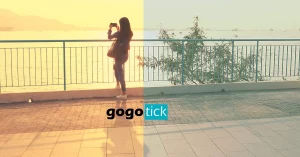It seems like, as long as you have an iPhone in your pocket, you can claim to be an amateur photographer, but is the iPhone camera really better than a traditional point and shoot camera? In this article, we take an in-depth look at the pros and cons of each camera.
iPhone Camera Vs. Point And Shoot: iPhones are conveniently always on your person and you can share and edit photos in seconds. Point and shoot cameras can have better image quality, a true optical zoom, more ability to manipulate settings, and are less expensive than new generation iPhones.
There are advantages and disadvantages to both iPhones and point and shoot cameras, and the choice generally comes down to the photographer’s personal preference and how you intend to take photos. If you’re not sure which is the better investment for you, you’re not alone. We’ve assembled this useful guide and review to help you weigh out the pros and cons of both camera types.
iPhone Camera Or Point And Shoot: How Do I Decide Which To Use?
There have been arguments that the traditional point and shoot camera is on its way to extinction due to the advances of the iPhone’s camera technology. However, this simply isn’t true. Point and shoot cameras still have a valuable edge over the iPhone and will still always hold a place in particular photographer’s hearts.
Whether you select an iPhone or a point and shoot camera, the quality of your photos will definitely depend upon your skills as a photographer and whether you’re willing to take the time to learn how to utilize your camera to the best of its ability. Sure, you can set an iPhone to portrait mode or a point and shoot to an idealized setting, but it still won’t replace the ability to understand how to manipulate settings to achieve the best photograph.
The key is to do your research about both the iPhone and point and shoot cameras in order to determine which set up will work best for you. There is a surprising amount of overlap between the two types of cameras, so certain features may be what draws you to one camera over the other. To find out more about why you might value one over the other as well as useful tips for how to find the best camera and get the most out of your set up, read on below.
What Is Better: An iPhone Camera Or Point And Shoot Camera?
Honestly, the choice of using an iPhone camera or a point and shoot camera will mostly come down to personal preference. Both offer features that can be seen as more convenient depending on what you want to get out of your device.
If you want to be able to instantly edit and upload your photos after taking them, you will likely be more pleased with the iPhone. While many point and shoot cameras now come with wireless or Bluetooth options to upload pictures to another digital device, this is an additional step. The additional step means it takes longer and has more room for error. With the iPhone, all your photos are in one place and there’s no need to transfer to a second device in order to publish.
iPhones allow you to instantly review your photo and use a number of third-party apps to tweak the image to your liking within a matter of seconds. This means it’s a better option for anyone who wants to be able to do everything on one device and have a lot of creative editing at their fingertips. Most point and shoots don’t come with robust editing capabilities, but if you upload to a desktop you could use a program such as Photoshop to edit to your heart’s content.
For the best sharpness and detail, high-end point and shoot cameras tend to be better than camera phones, mostly because the image file is larger so more data is able to be contained within the photograph. Point and shoot cameras have larger sensors that are able to take in more data and so they handle varying conditions better.
For those who just want to be able to take photos and share them digitally, an iPhone is a better choice. For someone who wants to be able to experiment with settings like the shutter speed or zoom and have features such as image stabilization and longer battery life, a point and shoot is a better option.
Why Take Photographs With A Point And Shoot Camera?
Point and shoot cameras have a number of features that make them appealing for some photographers, and certain people prefer them over smartphone cameras as well as DSLR cameras.
First of all, point and shoot cameras tend to be lighter and smaller than a traditional DSLR. You don’t need to lug around an extra bag of equipment in order to carry a point and shoot camera. Some of them are slim enough to fit into your pocket. This makes them comparable to a smartphone in regards to portability, but point and shoots are generally more durable.
Point and shoot cameras also tend to be the cheapest option when compared to both new generation smartphones and DSLR cameras, with a few exceptions (we’re looking at you Leica Q Typ 116.) This makes them a lot more accessible to anyone who wants to start taking photographs. Point and shoot cameras also don’t need any additional equipment, and since they have a fixed lens you don’t need to worry about switching out lenses like for DSLR cameras.
Point and shoot cameras are also known for having a remarkably large depth of field. This can help you capture everything in a scene in precise detail, which is usually a big help to novice photographers. However, it can also work against you if you are wanting to be able to isolate a subject from the background or get a bokeh effect.
Point and shoot cameras are being made with a slew of features that make them more than just your drugstore windup camera. They are a great option for anyone looking to take quality photos but who also wants a light, portable camera that can withstand the travails of traveling.
What Are The Best Point And Shoot Cameras?
If you’re looking for a more versatile photography experience than what is offered with smartphone cameras, there are plenty of amazing point and shoot cameras available on the market that are worth considering. Here are some of our top favorites.
- The Canon PowerShot SX720 is a remarkably powerful little point and shoot, and it is full of features that make it one of our favorites. The Powershot SX360 has an amazing 40x optical zoom, meaning you can get in close but not lose any details to pixelation, as you would with a smartphone. It also has an LCD screen that tilts up to 180-degrees so you can take selfies, and even apply a “Smooth Skin” filter to look your best. It also has built-in Bluetooth and Wifi.
- Another top contender from Canon is the PowerShot SX530 HS. This point and shoot has a 50x optical zoom that is tamed by an intelligent image stabilization feature and zoom framing assist, making it easier than ever to capture long shots. It has a 16-megapixel sensitivity, making impressive images even in low light conditions. The PowerShot SX530 HS also has wireless connectivity, making uploading and sharing images relatively simple.
- If you like photographing distant subjects, such as wildlife or sporting events, but want the photograph to feel like you’re right next to the subject, then the Nikon Coolpix P950 is for you. It boasts an amazing 83x optical zoom with a versatile focal-length range that gives you the ability to take incredibly detailed macro shots as well as super-telephoto distant subjects. Its 16-megapixel capability also makes even dimly lit situations a breeze to photograph.
- One area where a smartphone simply cannot compare to a point and shoot camera is durability, and that’s especially true when considering the Olympus Tough TG-6. This compact camera is built for adventure. It is waterproof up to 50 feet, has anti-fog technology, a lens barrier that helps protect from scratching, and it is shockproof and crushproof. It also boasts a very decent 12-megapixel sensor and 4K video capabilities.
How Can I Take Better Pictures On My iPhone?
If you don’t want a separate camera or don’t have the space to travel with additional gear, an iPhone can still take remarkably beautiful photographs. If you’re in doubt, check out the annual iPhone Photography Awards, where photographers everywhere are proving that an iPhone can produce amazing visual art.
One quick tip to capture better images is to consider your exposure settings on the iPhone, especially if you are trying to shoot in varying light settings. This is done by tapping to set your autofocus, then holding your finger down on the right side of the focus box. Slide your finger up and down to adjust the exposure to your ideal setting. By adjusting your exposure before you shoot, you can play with different effects of light and shadow in your image.
If you have the iPhone X or later, you have the ability to control depth of field in your images. Switch to portrait mode and tap the f-stop button in the top right to bring up a sliding scale below the image. Setting your f-stop to a lower number will give a much shallower depth of field, allowing you to isolate a subject and blur out the background. A higher f-stop value will allow you a wider depth of field so you can capture more details at varying distances.
Being familiar with how to control features on your iPhone can help you adapt to shoot photos in varying conditions. For example, if you are trying to take a photograph of something that is backlit or in a dim setting, adjusting your exposure setting can help you achieve a better photo balance.
Check this article to learn more about taking long exposure photos on an iPhone.
If you want more advice on how to capture certain styles of images or take photographs in certain conditions with your iPhone, such as photographing action or experimenting with color atmosphere, there are some very straightforward and helpful video tutorials available from Apple here.
How To Make Sure Your Photos Are Optimized For Digital Device Viewing
Whether you are using an iPhone, a point and shoot, or a full-frame DSLR, you are probably aiming to post your photos on a digital platform. More and more photographers are creating digital portfolios, and Instagram and Facebook are popular among amateur and professional photographers alike.
If you are posting your images online, you need to keep in mind that people will likely be viewing them on a digital device such as their phone or a tablet. Some applications will also post in a standard format, such as the square picture posts of Instagram. This can influence how you take photographs.
When people are browsing on a digital device, they are most often viewing vertical images. Vertical images look better on mobile formats and even if you have a gorgeous horizontal shot, people can’t always be bothered to rotate their phone into landscape mode. If you plan to mostly post to digital platforms like Facebook, you should aim to capture more vertical photographs rather than landscape.
As mentioned earlier, Instagram posts are formatted as squares. If you plan to exclusively post to Instagram, it is incredibly helpful to keep this in mind when taking photos. If you take a full photo and then have to adapt it to fit the square requirements, this can dramatically alter the composition and balance of your photo. The iPhone and some point and shoot cameras have a specific setting to let you capture square photos to avoid this headache in editing.
By keeping in mind where and how your audience will be viewing your photos, it can help you decide how to better capture images so they are already optimized for online posts. Taking the time to optimize photos as you take them will save you frustrations later when you are editing them and trying to fit them to formats required by apps and digital devices.
What Is Smart HDR And Does It Matter?
If you are trying to compare smartphone cameras to each other or to point and shoot cameras, you have probably come across Apple’s claim of “Smart HDR. But what is Smart HDR, anyway?
Newer generation iPhones come equipped with Smart HDR thanks to Apple’s powerful software processor within the phone. Whenever you take a photo on the iPhone, there is no lag to capture the image and the Smart HDR ensures that several frames have been captured simultaneously. These frames are analyzed by the Smart HDR and then the best features of each are pulled in order to great the best final image.
So, in a way, Smart HDR is like artificial intelligence that is compiling information from multiple image sources, all captured in the same second, in order to select the best elements so the resulting picture is the amalgam of all the best parts.
This isn’t something that is absolutely necessary if you are a photographer, but it is certainly a nice perk to shooting with an iPhone. It can save you time when editing photos since the device already does some of the labor for you. It is also an incredibly helpful feature for anyone who wants to take better shots but doesn’t want to have to dive into the nitty-gritty of particular camera settings and editing nuances.
Is A DSLR Camera Better Than A Point And Shoot Or An iPhone?
Finally, you might be wondering what all the hubbub is about between point and shoot versus the iPhone. Isn’t a DSLR camera the best option by far? Not necessarily.
Originally, DSLR (digital single-lens reflex) cameras were reserved for serious photographers and professionals, mostly due to their large price tags and features that had a steep learning curve. But now DSLR cameras are reducing in price and coming with features that make them much more accessible to amateur photographers.
As far as DSLR cameras go, they generally tend to have the edge on image quality since they can operate at a quicker ISO, meaningless grainy photos, and they have massive sensors. DSLR cameras also have the advantage of allowing for manual control settings. This is a huge plus for anyone wanting to be able to manipulate the controls of the camera, but for photographers who are just looking to keep things basic, it is confusing and unnecessary.
DSLR cameras have the advantage of being incredibly adaptable, but this flexibility comes with a cost. DSLR cameras have interchangeable lenses, meaning you can have any sort of zoom you desire, as well as accessories such as filters and flashes to make photographs possible in nearly any situation. However, each lens and accessory costs more money and it is another piece of equipment you will have to lug along when photographing.
Generally, DSLR cameras are a great option for anyone who wants to be able to have total control over their camera and have the best image quality possible. However, if you aren’t willing to learn the nuances of how to adapt settings or purchase additional equipment, there really isn’t any notable advantage of a DSLR camera compared to a point and shoot or an iPhone.
In this must-read article you will find all the answers to the most frequently asked questions to know all the pros and cons between an iphone camera or a digital camera.






6 comments
evDEN Eve naKLiYAT
Every weekend i used to go to see this web site, because i
want enjoyment, for the reason that this this website conations truly pleasant funny material too.
Evden Eve
Fantastic blog! Do you have any recommendations for aspiring writers?
I’m planning to start my own website soon but I’m a little lost on everything.
Would you propose starting with a free platform like
Wordpress or go for a paid option? There are so many choices out there that I’m
completely confused .. Any recommendations? Thanks a lot!
Zeytinburnu Nakliye
Howdy! Do you know if they make any plugins to protect against hackers?
I’m kinda paranoid about losing everything I’ve worked hard on. Any tips?
Nakliye
Nice blog here! Also your site loads up very fast!
I wish my site loaded up as fast as yours lol
Rosario
Hello there! Would you mind if I share your blog with my facebook group?
There’s a lot of people that I think would really enjoy
your content. Please let me know. Thank you
Eventumcool
Nice go ahead, thank you!!